Your brakes are screaming, and your wallet isn’t exactly cheering either. So do you really need to change all four brake pads at once, or can you just do the noisy ones and move on? You’re not alone if you’re scratching your head—this one throws a lot of people off.
Here’s the deal: On most cars, the front pads wear out faster than the rears. That’s not a sales trick—about 70% of your stopping power comes from the front. So if your mechanic tells you the fronts are toast but the rears look fine, they’re probably not lying. You don’t have to replace all four just for the sake of it.
Still, things get more interesting with certain models. Some cars and SUVs have “even wear” setups or electronic brake force distribution, so the rear pads can go just as fast as the front. If all four are worn down close to the metal, swapping them all in one go avoids headaches later.
- How Brake Pads Wear on Most Cars
- Changing Just Two Pads vs. All Four
- Warning Signs You Need New Brake Pads
- What Happens If You Only Change The Front or Rear?
- Tips to Save on Brake Pad Replacements
- FAQs About Changing Brake Pads
How Brake Pads Wear on Most Cars
Ever wonder why the front pads always seem to wear out before the rear ones? It’s actually pretty simple—most of your car’s stopping power is up front. When you hit the brakes, weight shifts forward, putting extra pressure (and wear) on those front pads.
In fact, the standard split is about 70% braking in the front and 30% in the rear. This means front pads can wear out twice as fast as rears, sometimes even faster if you do a lot of stop-and-go driving. Here’s a quick look at typical brake pad life:
| Brake Position | Average Pad Life (miles) |
|---|---|
| Front | 25,000 - 40,000 |
| Rear | 40,000 - 60,000 |
Other stuff affects wear too. City drivers burn through pads quicker than folks who drive mostly highway. Heavy vehicles, aggressive driving, and towing can also shred your pads in a hurry.
- Front brakes are usually bigger than the rear, built to handle more heat and work.
- If you drive a hybrid or electric, regenerative braking can take a load off—those pads last longer.
- All-wheel-drive and high-performance cars may have a more even front-rear split.
If you want to check for yourself, look for uneven pad thickness (one wheel is thinner), listen for squeaking, or notice if your car pulls to one side. According to the Car Care Council,
"Most vehicles will require front brake pad replacement more frequently than rear brake pads, though there are exceptions depending on the car's design and usage."
The key thing: your brake pads wear out mostly in the front, but don’t ignore the rears. Sometimes rotors and pads can wear unevenly from bad calipers or sticky sliders, so give all four corners a quick look when it’s time for service.
Changing Just Two Pads vs. All Four
Let’s get straight to it—do you have to swap out all four brake pads every time? No, not always. On most cars, the front pads wear out much faster. Here’s why: every time you hit the brakes, the car’s weight shifts forward, using up the front pads at nearly double the rate of the rear ones.
But before you just slap on a new pair and call it a day, think about this: uneven pads can sometimes mess with your stopping balance. For average drivers with regular sedans, it’s common to switch out only the fronts or only the rears. The trick is never to replace just one side. It’s always both front or both rear, never left or right by itself.
For cars equipped with smart brakes—like those with Electronic Brakeforce Distribution (EBD) or electric parking brakes—it’s a good idea to change all four if they’re worn close together. These systems expect even grip at all corners. Uneven pads can confuse the computer and lead to unpredictable stops.
| Replacement Choice | When It’s Okay | When to Avoid |
|---|---|---|
| Front or rear only | Front or rear pads are much more worn; rears/fronts still have plenty of life | You have all-wheel disc brakes and all pads are close to worn; your car has EBD or advanced traction aids |
| All four at once | All pads are worn evenly; you want to reset the clock on your brake pads for peace of mind | Your mechanic says only one pair is needed and the other has significant thickness left |
If you only swap out two pads, try to use the same brand and type as what’s on the other axle. Mixing brands or types can make your brakes feel funny—one end might grab harder or squeak more. Always bed in new pads gently for the first 200 miles. Hard stops are off the table unless you want to start over with a fresh set sooner than you’d like.
One more tip: if you’re towing, hauling heavy stuff, or driving in mountains, your pads wear out faster, and you may notice the rears catching up with the fronts. Give both pairs a check before making the call to replace just two.
Warning Signs You Need New Brake Pads
No one grabs a flashlight and checks brake pads every Saturday. Most drivers just wait for the signs, and honestly, your car will try to clue you in. The trick is knowing what to look (and listen) for before your brakes give up on you completely.
Here’s what screams trouble:
- Squeaking or squealing sounds: Many pads are built with a small metal tab that screeches when the pad is low. Annoying? Yes. Useful? Absolutely—it’s a built-in warning.
- Grinding noise: Hear a grinding noise when you hit the brakes? That’s probably metal scraping on metal because you waited too long. That can quickly turn into a bigger, pricier problem.
- Longer stopping distance: If you feel like you need more runway to stop, worn pads could be the reason. Never risk it—replace them sooner rather than later.
- Steering wheel vibration: Vibration when braking can mean a few things, but it often points to unevenly worn pads or warped rotors.
- Brake warning lights: Lots of cars flash a warning dash light when pad sensors pick up that the pads are worn past a safe point. Don’t ignore it.
- Thin brake pads: If you can peek through the wheel spokes, try eyeballing the pad thickness. If it’s down to around a quarter-inch or less, it’s time to swap them.
If you notice any of these, get your brakes checked—fast. Small problems can snowball into bigger repairs (and higher bills) if you ignore them.
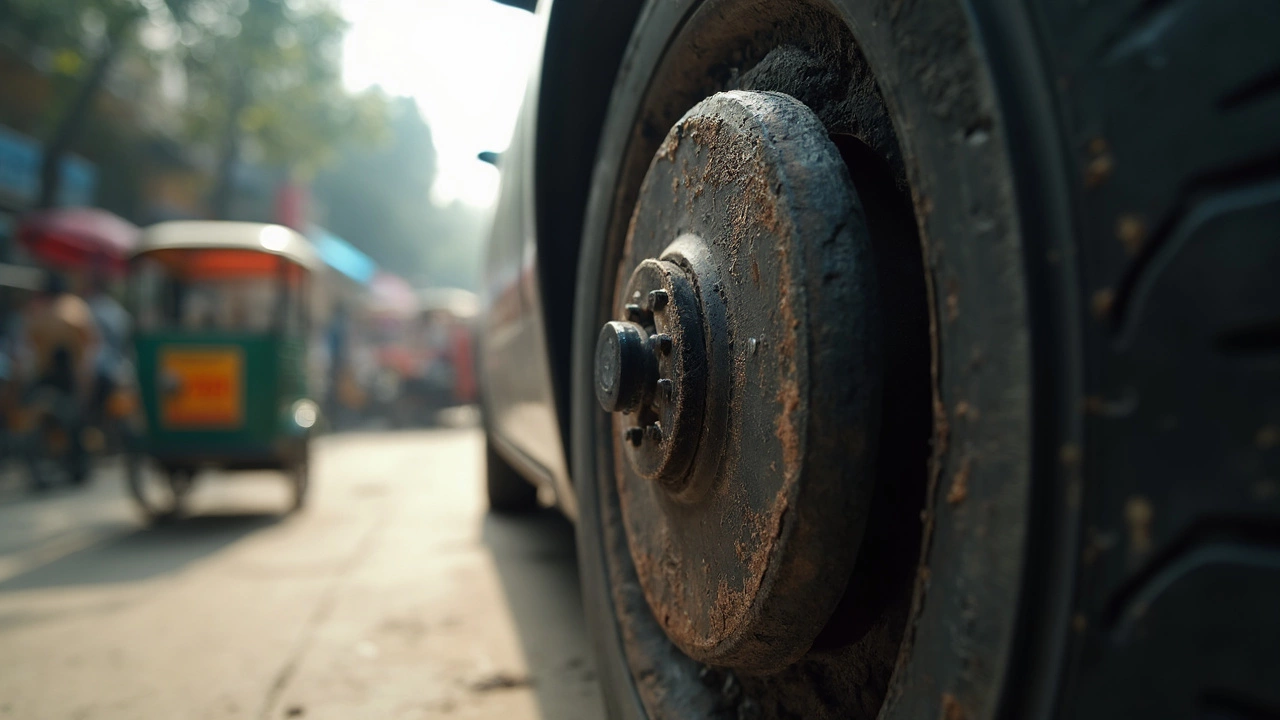
What Happens If You Only Change The Front or Rear?
Let’s say you swap out just the front or just the rear brake pads. Is your car going to fall apart? Not at all, but there are a few things you should know so you don’t accidentally mess up your ride or your next brake job.
The most common thing people notice is uneven braking. When one pair of pads is brand new and the other is half-worn or worse, the new pads will bite harder. This can actually make the car pull a little during hard stops, especially if you slam on the brakes in the rain. It’s not super dangerous at first, but it’s definitely not ideal either.
- If you only replace the front pads, you might hear noises from the worn rear pads. Dust and debris can collect, leading to squeaks and even rotor damage over time.
- Only swapping the rears? If the front pads are thin, your stopping distance will go up. The fronts do most of the heavy lifting, so leaving them worn makes every stop riskier—especially if you’re hauling more weight or driving fast.
If you like data, check out this quick table for a sense of how the fronts and rears usually wear, depending on what and how you drive:
| Axle | Typical Replacement Interval | Brake Force Handled |
|---|---|---|
| Front | Every 30,000-40,000 miles | ~70% |
| Rear | Every 50,000-60,000 miles | ~30% |
Mixing old pads and new also sometimes leads to uneven wear on your rotors. That means the next time you come in for pads, you’re more likely to get hit with an extra charge for rotor resurfacing or replacement—and that’s never fun.
So, changing just the front or the rear pads works if the other pair really does have plenty of life left. But if the difference is small, do both sets together. It’ll keep your braking balanced and save you a trip to the shop down the road.
Tips to Save on Brake Pad Replacements
Changing brake pads doesn’t have to drain your wallet. Here’s how you can save money and still keep your car safe.
- Shop around for prices. Don’t just settle for the first quote you get. Local mechanics often charge less than dealerships for the same work.
- Consider doing front and rear separately. If the rear pads aren’t worn down, you don’t need to replace them just because you’re swapping the fronts. Mechanics sometimes try to sell you all four even when two are fine.
- Buy reputable aftermarket pads. You don’t have to buy the most expensive brand. Good aftermarket pads from brands like Wagner or Bosch give solid performance for less cash.
- Check for wear early. Those little squeaky tabs aren’t there just to annoy you—they warn you before you hit the metal. Catching the problem early beats paying for new brake rotors or calipers.
- Look out for bundle deals. Some shops offer discounts if you do other services—like replacing rotors or getting an oil change at the same time.
- DIY if you’re comfortable. Replacing pads yourself can cost half as much. Tons of video guides walk you through it. Just make sure you have the right tools and don’t rush.
Here’s a quick look at how much you might spend, depending on where you go:
| Type of Service | Typical Cost (USD, per axle) | Notes |
|---|---|---|
| Dealership | $250 - $400 | OEM parts, higher labor |
| Independent Shop | $150 - $300 | Aftermarket or OEM options |
| DIY | $40 - $120 | Parts only, no labor |
Don’t forget—if you put off replacing old pads, that grinding sound usually means you’ll pay a lot more later. Ignoring brake noise can double your repair bill because rotors or calipers might get damaged. Stay ahead of it, and you’ll keep both your car and your wallet happy.
FAQs About Changing Brake Pads
Got questions? Most drivers do. Here's what you really need to know about swapping out your brake pads.
How do I know when my brake pads need changing? If you hear squealing, grinding, or a metal-on-metal sound, it's time. Also, if your brake pedal feels soft or you see a warning light on your dash, don't ignore it. And if a mechanic says your pads are under 3mm thick, you're overdue.
Do I really have to change both pads on the same axle? Yes. For safety and even braking, always replace brake pads in pairs (both fronts or both rears at the same time). Replacing one side only gives you lopsided stopping and can be dangerous.
Should I get the rotors replaced, too? Not always. If they're smooth and not too thin, a quick resurfacing usually does the trick. But if you see deep grooves, cracks, or bad rust, swap them out. New pads on old, scored rotors can make your brakes feel awful—and wear out faster.
What's a typical lifespan for brake pads? Most pads last between 30,000 and 70,000 miles, but stop-and-go city drivers or heavier vehicles burn through them much faster. If you’re heavy on the brake, like in traffic or towing, check your pads every 10,000 miles.
- Highway driving wears down pads slower than city driving
- Front pads usually wear out faster than rears
- Low-dust ceramic pads tend to last longer, but can cost more up front
Check out some quick stats for different pad types and driving styles:
| Pad Type | Average Lifespan (Miles) | Cost Range (per axle) |
|---|---|---|
| Semi-metallic | 30,000 - 50,000 | $50 - $150 |
| Ceramic | 50,000 - 70,000 | $75 - $250 |
| Organic | 20,000 - 40,000 | $35 - $100 |
Is it safe to wait if my brakes squeak? Not for long. Squeaking can be harmless dust, but if the noise sticks around or gets louder, stop delaying. Letting brake pads wear out completely is asking for an expensive rotor replacement—plus, it’s unsafe.
If you’re not sure about your pads, a quick inspection at your next oil change isn’t a bad idea. Staying on top of brake maintenance saves money and keeps you safe. When in doubt, ask for a look from a trusted mechanic or do a little peek through your wheel spokes yourself.
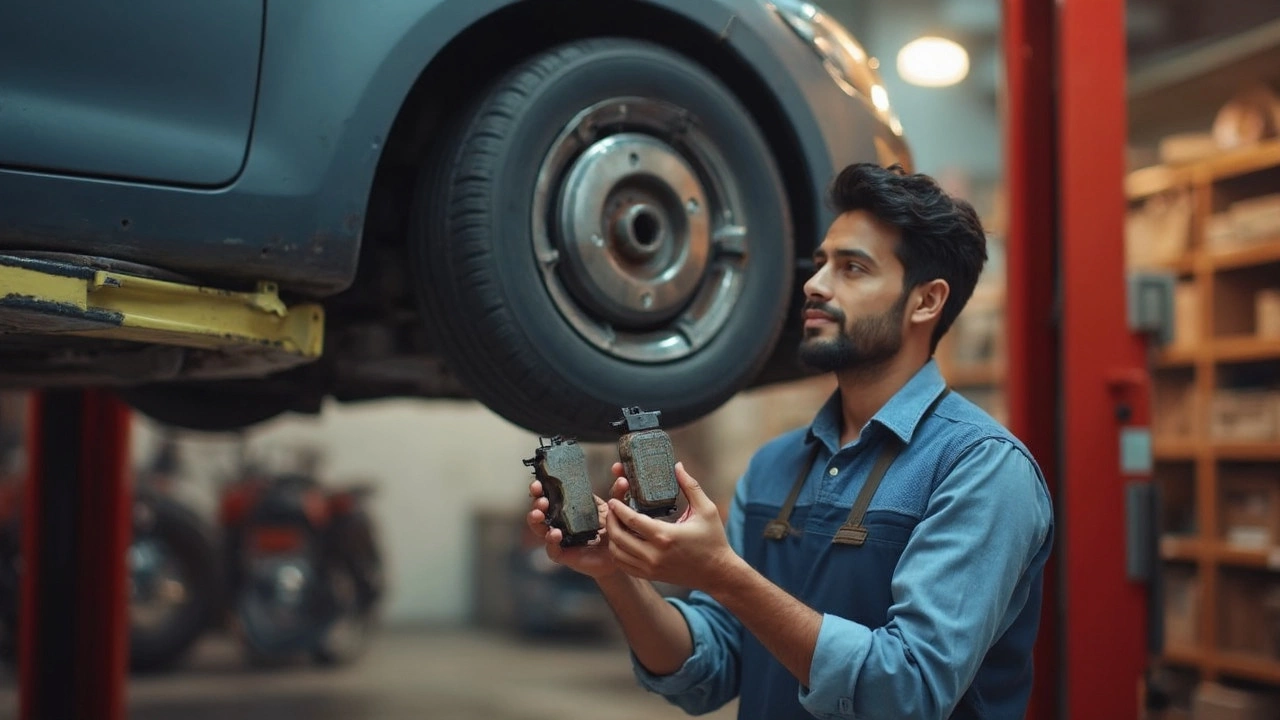


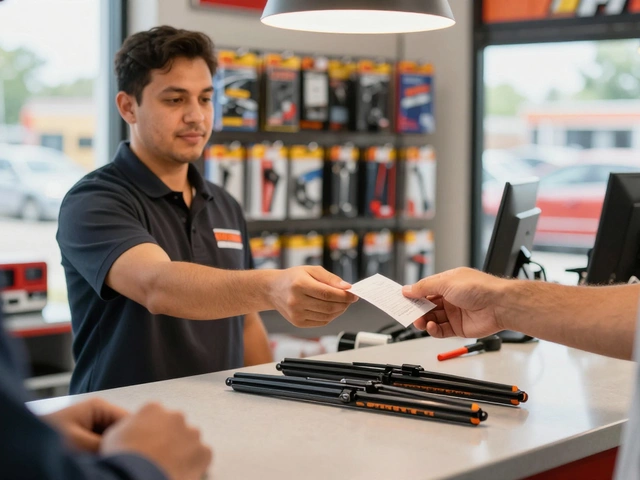


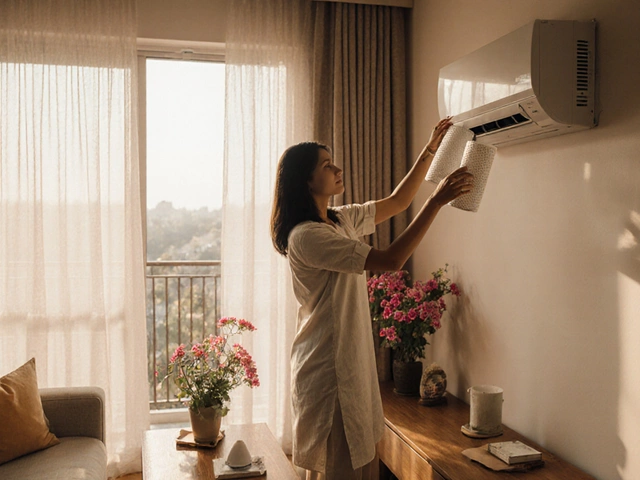
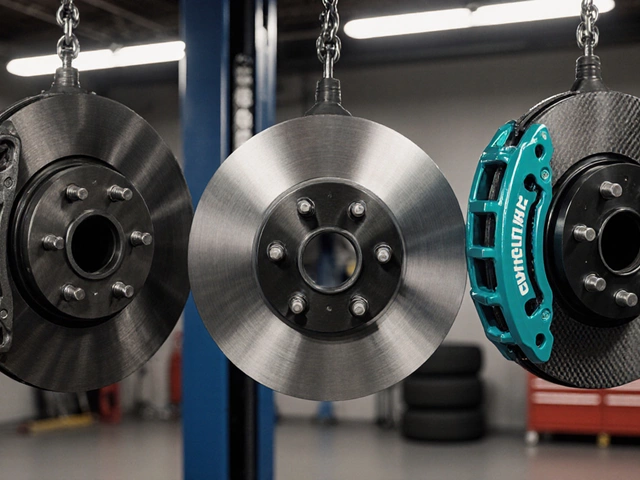
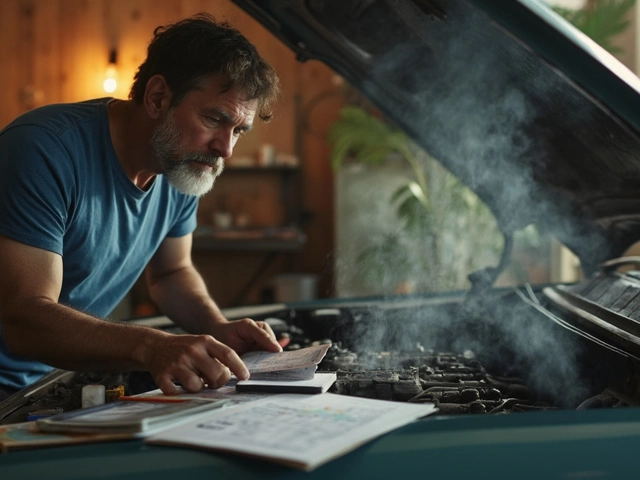
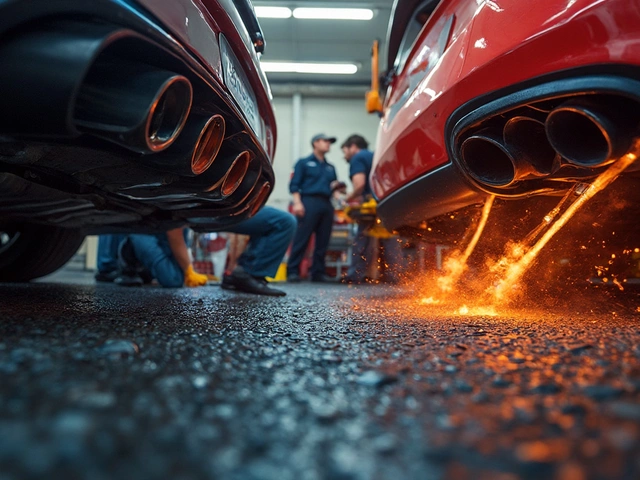

Write a comment